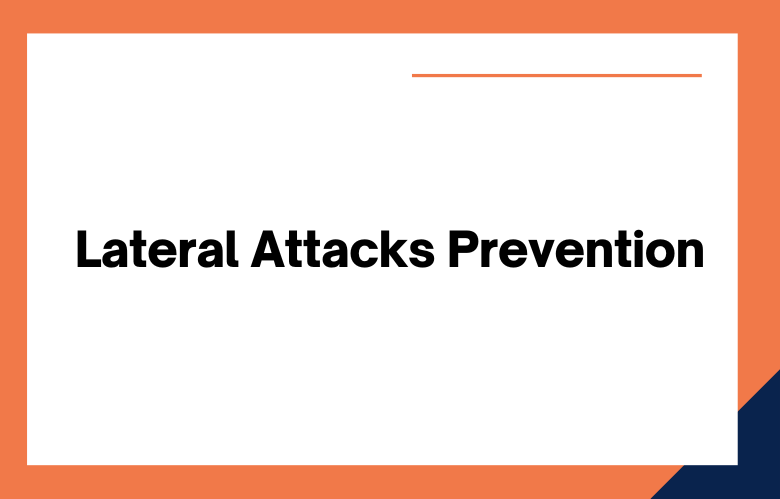In the digital world, malicious actors regularly target political campaigns to gain access to confidential data and disrupt operations. A lateral attack is one of the most common methods used to do this. Lateral attacks occur when an attacker infiltrates one computer or system and then uses it as a jumping-off point to access other computers or designs on the same network.
This kind of attack is hazardous because it can quickly spread throughout an entire system, giving attackers access to sensitive data and causing significant disruption. We’ll look at how political campaigns can protect themselves from lateral attacks.
What is A Lateral Attack Political Campaign?
A lateral attack is an advanced cyberattack that uses a network to spread malicious software.
This attack typically begins when a hacker gains access to a computer or network using stolen credentials or other methods.
Once inside, the hacker can use the compromised system to spread malicious code throughout the entire network, allowing them to access sensitive information stored on other computers or networks.
Why Are Lateral Attacks So Dangerous?
Lateral attacks are hazardous because they can go undetected for long periods.
Unlike other types of cyberattacks, which often require sophisticated technical skills, lateral attacks rely on exploiting existing vulnerabilities in a network.
This means that even if users change their password or update their security settings regularly, they may still be vulnerable to a lateral attack if there are any weak spots in their system.
Since this attack is often conducted remotely, it can be difficult for victims to detect until it’s too late.
What Can Political Campaigns Do To Prevent Lateral Attacks?
The first step to preventing lateral attacks is to ensure that all systems and networks used by a political campaign are secure.
This means regularly updating software, using strong passwords, and restricting access to sensitive data only to authorized personnel.
We also mean monitoring user activity and tracking who can access the information.
Political campaigns should invest in security solutions like antivirus software and firewalls that can help detect malicious activity on their networks and alert them before an attack occurs.
Political campaigns should ensure they have adequate backup plans in place in case something goes wrong so that they can quickly recover any lost data without starting from scratch.
Protecting Political Campaigns from Lateral Attacks
In the world of political campaigns, security is essential. As technology becomes increasingly integrated into our lives, campaigns must be aware of the potential risks posed by cyberattacks.
One type of attack that is becoming more common is known as a lateral attack.
This type of attack uses a network to spread malicious software and can have devastating effects if not detected and dealt with quickly.
In this article, we’ll discuss lateral attacks and how they can be prevented in political campaigns.
Preventing Lateral Attacks
Fortunately, there are several steps that political campaigns can take to prevent lateral attacks from occurring.
The first step is implementing robust authentication protocols for all users on the network.
This means requiring users to use complex passwords and two-factor authentication when logging into their systems.
Organizations should implement regular security scans of their networks to detect any potential threats before they become serious problems.
Organizations must keep their systems up-to-date with the latest security patches and updates to protect against potential exploits or vulnerabilities.
Identifying Potential Vulnerabilities
The first step in protecting your political campaign from lateral attacks is identifying potential vulnerabilities malicious actors could exploit.
This can include weak passwords, outdated software, unpatched systems, or any other security weaknesses that could be used as a gateway for attackers.
Once these potential vulnerabilities have been identified, they must be addressed as soon as possible to reduce the attack risk.
EncouragiNetwork Segmentation
Network segmentation is one of the most effective ways to guard against lateral attacks.
This technique involves dividing a network into smaller segments or “zones,” each with security measures, such as firewalls or authentication protocols.
By doing this, it becomes more difficult for an attacker to gain access to the entire network because they must first bypass multiple layers of security.
If an attacker compromises one segment of the web, then the other segments remain safe and unaffected.
Access Management
Along with network segmentation, access management is another critical element in preventing lateral attacks on a political campaign’s infrastructure.
Access management involves setting up user accounts and assigning permissions that dictate what areas users can access on the network.
This prevents malicious actors from accessing sensitive information or critical files by ensuring that only authorized personnel can access them.
In addition, multi-factor authentication should be enabled for all user accounts as an added layer of security against attackers who may have gained access through stolen credentials or phishing emails.
Security Monitoring
Security monitoring is essential in protecting your political campaign from lateral attacks.
Security monitoring involves regularly scanning the network for any suspicious activity that could indicate an attack has taken place or is in progress.
Using automated tools such as intrusion detection systems (IDS) or vulnerability scanners can help detect potential threats before they become actual problems and allow you to take action quickly before any damage can be done.
Having a team of experienced professionals on hand who are familiar with identifying and responding to cyberattacks will ensure that your campaigns are always secure and protected against any malicious activity that may arise.
Good Security Practices
In addition to addressing potential vulnerabilities, political campaigns must encourage good security practices among staff members.
This includes using strong passwords, avoiding sharing confidential information with unauthorized individuals, not clicking on suspicious links or attachments in emails, and monitoring suspicious activity on their network.
By training staff members on good security practices and encouraging them to follow them diligently, you can make it much more difficult for attackers to gain access to your network through lateral attacks.
Monitoring Network Activity
One of the best ways to protect your political campaign from lateral attacks is by closely monitoring network activity.
By keeping an eye on what’s going on in your network—including which websites are being accessed and which files are being downloaded—you can quickly identify any suspicious activity before it becomes a problem.
We also needed robust security solutions such as antivirus software and firewalls to detect potential threats before they become a reality.
Conclusion:
Protecting your political campaign from lateral attacks is essential to keep your operations secure and running smoothly without interruption.
The key is identifying potential vulnerabilities and addressing them promptly, encouraging good security practices among staff members, and monitoring network activity closely so that any suspicious behavior can be determined early on.
With proper preparation and vigilance, you can safeguard your campaign against lateral attacks and ensure its success!
Call: +91 9848321284
Email: [email protected]











